Nolina: description, types, transplantation and care

Many exotic plants grow successfully in the homes of Russians. Among them, nolina, or bokarney, stands out. Despite its exoticism, such a flower is not whimsical and is suitable for inexperienced and lazy growers. It will be interesting for you to get acquainted with this amazing plant.

Description
Perennial plants with the interesting name "Nolina" belong to the Nolinov subfamily and the Asparagus family, although more recently they were reckoned among the Agave plants. In nature, these exotic specimens are found in Mexico and the southern regions of the United States. Due to its unusual appearance, the plant has received many additional names. Among them, the most interesting are the "elephant leg", "ponytail" and "bottle tree". Many lovers prefer to call this exotic representative of the bokarnei flora.
Under natural conditions, this palm survives in arid conditions. This explains its unusual appearance. In the extended part of the trunk, called the caudex, the bokarnea stores moisture in case of a dry season. Caudex can merge into one narrow trunk or split into several, forming a powerful ramification. The gray or brown bark keeps moisture inside the plant.
Tight, narrow and long leaves gather close to each other in dry times, which reduces the surface for the evaporation of precious moisture. The foliage is collected in a crown in the form of a dome, which makes the plant look like a palm tree. In mature plants growing in natural conditions, the leaves can be up to 2 meters in length. In nature, nolin can grow up to 10 meters.
A houseplant can reach a maximum of 1.5 meters.


Bocarnea can bloom after 15 years of age. The flower looks like a large paniculate inflorescence, which is covered with creamy flowers. At home, flowering does not occur, only in greenhouses you can see blooming bokarney. This plant is appreciated not only for its unusual and spectacular appearance. To get such an exotic palm tree is also worth it because of its beneficial properties:
- saturation of air with oxygen and ozone;
- his cleansing;
- the release of air ions and phytoncides by the plant - the latter components are capable of destroying a number of pathogens of respiratory diseases.
All of these facts are scientifically proven, so you have a good reason to settle in the house a sideknee.


Views
In total, 9 varieties of nolina are distinguished. There are many similarities between them, but there are also differences. Let's get acquainted with the main features of these plants.
- Long-leaved is distinguished by long thin foliage. The leaves do not fall off the plant, but form spectacular straw skirts. The tree is characterized by a low height and a large number of branches. The cork bark is covered with deep cracks. This nolina is found in parks on the Black Sea coast.
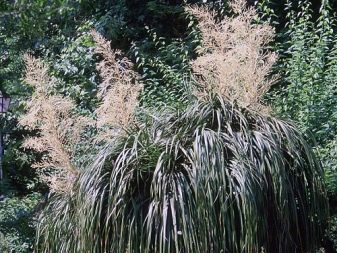

- Lindemeira is prized for its decorative and attractive properties. Several shoots of small thickness depart from the caudex. These shoots are decorated with a dense bunch of thin foliage. The sinuous leaves are colored deep green. Bunches of leaves can fall down to the ground. Nolina Lindemeira grows well at home. She is able to achieve human growth in a short time, if, of course, she grows in a favorable environment for her.


- The folded nolina is also called Recurvata. This type of plant is the most common among indoor flowers. A distinctive feature of such a bokarnia is a very wide trunk, the diameter of which can reach a meter in a plant living in its natural environment. It tapers upwards. The top of the bent nolina is a bunch of hard thin leaves, which have a ribbon-like shape. They are arched, drooping and curling.


- Stamp nolina is ideal for home growing. The plant is distinguished by its compact size, a short spherical neat stem, which takes the shape of a bottle as it grows. The leaves are collected in neat rosettes.


- Matapskaya bokarnea is undersized, since its height does not exceed 2 meters in natural conditions. A thick leaf head, which almost completely hides the tree trunk, adds a showiness to the tree. This species is not used for home breeding.


- Nelson's bottle tree has a weak trunk, which is not visible due to the dense and lush foliage. Young leaves are elastic, do not bend towards the ground, but stick out in different directions. Old foliage is drooping, which looks very impressive. Such a tree can grow up to several meters. It is also not a house plant.


- The thin nolina has a spherical barrel, from which grow long and thin leaves, collected in bunches. Such a tree blooms very rarely, but its flowers are beautiful, painted in a red or deep pink hue.

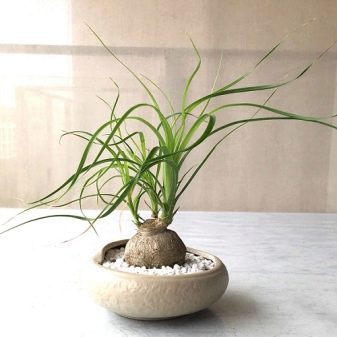
- The protruding bokarnea with its appearance very much resembles a thin nolina... The differences lie in the stiffer leaves that cannot hang freely to the ground, therefore they stick out, rising high above the trunk. Hence the name of this species came from.


- The compressed bokarnea stands out for its unusual shapewhich is squat and somewhat flattened. Young plants even resemble bulbs. There are many leaves, they are long, dark green. Dry foliage is preserved on the plant, it goes down and is pressed against the trunk. This makes the plant look like a haystack. It can be used for home breeding, although it is not common.


- Small-fruited bottle tree can be called the most nondescript of all nolins.... The trunk is not characterized by expressiveness, the leaves are dull, often with dry ends. The plant blooms often, but this does not add beauty to it. There are many inflorescences, they are inconspicuous, they look like long awkward panicles.

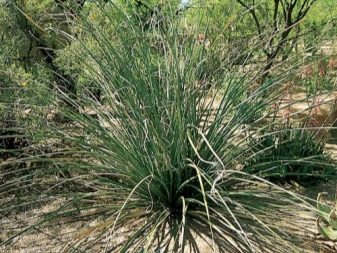
Growing requirements
Nolina takes root well in Russian apartments and feels good in various conditions. And yet she makes some demands on her master.
If they are respected, then the plant will reward with good growth and a gorgeous look.

- This exotic plant is very fond of lighting, therefore, for its placement, you can choose the south side and the hottest window. It can be difficult to place an adult plant on a windowsill. In this case, it is necessary to place the tree as close to the window as possible. No shading is necessary, any glare will only benefit this desert palm. If there is a lack of light, it will not disappear, but the external characteristics will decrease and the trunk will stretch towards the main light source. You can prevent this problem by rotating the pot.
- For wintering, you will need to provide additional lighting by installing fluorescent lamps. It is advisable to reduce the temperature gradually to 10 degrees. Under such conditions, the bokarnia will be able to prepare for wintering and go into a state of rest. Winter rest is not a prerequisite for keeping it. You can do without this if there is no way to create the necessary conditions for her relaxation.
- The humidity of the air for this culture from a hot climate is completely unimportant. Even very dry air is not scary to her, she will feel great.In such conditions, it is advisable to wipe the leaves more often with a damp cloth, but not spray.
- Young plants show active growth, therefore they need frequent pot replacement. Usually you have to transplant a young Nolina twice a year. An older plant does not grow so quickly and needs to be transplanted about once every 5 years, maybe a little more often. You need to focus on the correspondence of the pot to the plant planted in it.
- It is important to choose the right flower pot... The root system of an exotic palm is not particularly deep, so the planting container should be flat with holes for water drainage. The plant looks most impressive in ceramic pots. Moreover, they are heavy and will not allow the overall indoor flower to turn over.
- Nolina loves loose soil, which is created from peat, sand and leafy earth. Peat and earth are taken in one part, and two parts are needed for sand. A small amount of pebbles can be added to the substrate. The bottom of the pot must be covered with drainage material, it is best to use expanded clay, but other options are not prohibited. Then half of the prepared soil is filled up, the plant is set and the rest of the planting mixture is sprinkled on all sides.



Reproduction methods
You can grow nolina on your own, but this process is long and laborious, it requires compliance with a complex and multi-stage technology. Therefore, many refuse such an undertaking and go to the store for a young plant. Only desperate flower growers take on this difficult business. Reproduction of nolina is possible in two ways: from seeds and lateral processes.

Let's take a closer look at these two methods.
Seeds nolina reproduces most often in natural conditions. In this case, new plants appear quickly. At home, it is very difficult to create the necessary conditions for seed germination and the appearance of healthy and strong sprouts. This process is broken down into several stages:
seeds are soaked for several days in warm water, only those that have sunk to the bottom are selected;
we prepare the soil from peat and sand, we sow seeds, only lightly sprinkle them with earth, and cover the entire structure with glass, film or a cut plastic bottle;
we constantly maintain soil moisture;
the ambient temperature should not go beyond + 18 ... +25 degrees;
it is constantly necessary to remove condensate from the glass and ventilate the container with earth and seeds, otherwise the planting material will rot, mold will appear and it will disappear;
after 2-3 weeks, the first leaves will appear from the seeds;
transplanting sprouts into independent pots can be carried out after the appearance of two leaves.


Side shoots in an adult plant, they appear with proper care and favorable conditions. In this case, the main bulb forms a daughter bulb, which can independently develop and grow. The process of separating a young shoot requires a careful approach, since the main plant can be easily injured. This method of breeding nolina consists of the following stages:
- the new bulb is separated from the main bulb very closely;
the formed sections are treated with activated carbon and left for at least 3 hours;
on a young shoot, almost all leaves are removed;
the sprout is placed in peat soil and slightly pressed;
for some time the plant will have to be kept under a cap, which can be removed after the first leaves appear.
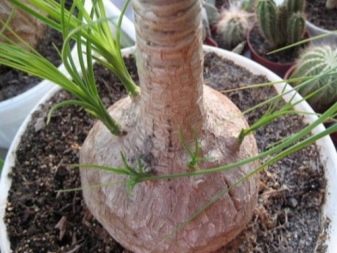

Seed propagation is safer, because when the daughter bulb is separated, there is a high probability of injury to the main plant.
An infection can enter through the wound or the process of decay can begin.

Home care
Nolina is a desert plant, she is used to surviving in difficult, even ascetic conditions.And yet, some of the features of care should be taken into account if you want to admire the unusual beauty of this exotic plant for a long time.

Next, we'll tell you more about how to care for this amazing indoor flower.
- The most destructive factor is excess moisture.... It is better to forget to water it than to water it very often. This moment is the main and most important feature that must be taken into account by the owner of nolina. In the summer, it will be enough to water the plant every 10 days. In winter, the frequency of watering is reduced to once a month. Believe me, this will be enough and more often than not it is definitely not necessary. It is better to water the plant in the lower way (the pot is placed in a container with settled water for half an hour).
- You do not need to cut off the trunk. It is only necessary to limit yourself to removing the dry tips on the leaves so that you get a neat thin strip. From some experts, you can hear the opinion about the need to prune the green top so that the plant will release side branches from dormant buds. This procedure is indeed carried out, but it is very dangerous for the plant, as it can become infected. You can only trust her with a very experienced specialist who can guarantee the safety and a positive outcome of the procedure.
- Nolin does not really need feeding. A young plant grows quickly and without fertilization. In 7 years, you can get a large plant that will be a real decoration in any home. If, nevertheless, there is a great desire to feed your pet, then you can use liquid mineral fertilizer. The concentration indicated in the instructions should be reduced by 2 times. Fertilizers are applied during the growth period and only after good watering. Dust must be periodically removed from the leaves with a damp cloth.
- An exotic plant does not like drafts, they have a destructive effect on him. Moreover, for this reason, the plant may die altogether.
- Also, do not add to the soil home remedies, which are beneficial for other plants.
Brewing tea, coffee grounds, sweet water and other improvised means will not bring a positive effect, but they can do harm.

Diseases and pests
In the process of growing nolina, you can face a number of problems. This plant can be sore due to containment violations. For example, from drafts or lack of moisture, foliage withers or plant tips dry out. In this case, you need to change the location or resume watering. You cannot spray nolin. Water entering the trunk or leaf axils can cause fungal growth or foliage decay.
The yellowing of a small number of leaves can also be a natural process, unrelated to environmental breaches. If the lower leaves of an adult Nolina have dried up, then you should not worry.
The stem of the bokarnea may in some cases look dry and wrinkled. This condition will indicate a loss of moisture during the winter dormancy. This situation is not terrible, but the plant must be urgently placed in water for an hour so that the plant can replenish its losses.
After bokarney it is treated with a solution of succinic acid (0.1%).

Some growers notice white bloom at the base of the trunk. Often this situation occurs due to the hard water that is used for irrigation. You can replace the water with filtered water. White bloom is not the only problem that occurs on the trunk of a plant.
Florists often note the presence of cracks. This behavior of the plant may indicate over / frequent watering or over-feeding. If you remove the cause of the problem, then the barrel will no longer crack, the existing cracks will heal on their own. Deep wounds can be treated with garden varnish, this will help the plant to cope with the problem.
Nolina is afraid of over-watering. Excess water can cause this exotic plant to rot.In this state, the leaves often turn black or become covered with dark spots. This problem is very dangerous, the plant cannot always be saved.
If the foliage has become impoverished, thinned out and lost its rich color, the plant needs a transplant.
It is better not to postpone the solution to this problem, since delay will complicate the adaptation process and reduce the immunity of your room beauty.

Nolina is also susceptible to pests. Despite the density of the leaves, pests still manage to disrupt the integrity of the leaf cover. Most often, spider mites, scale insects, thrips and worms settle on the sidewalk. If the foliage turns yellow on the plant and the tips of the leaves dry, then we can safely talk about the presence of pests on the plant. Treatment is urgently needed. Its essence will be as follows:
- mechanical removal of pests with a cotton swab dipped in soapy water;
- processing of leaves with "Karbofos" or "Actellik";
- re-processing of foliage to eliminate pests emerging from surviving larvae.
Do not be confused by the exoticism of the bokarnea and its unusual appearance. This plant is easy to care for, and everyone can grow this beauty from distant countries on their windowsill.
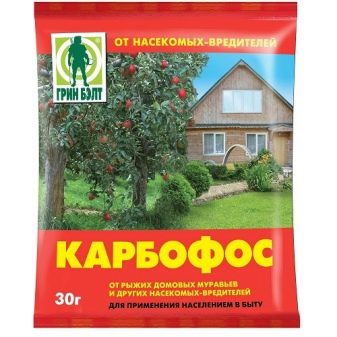
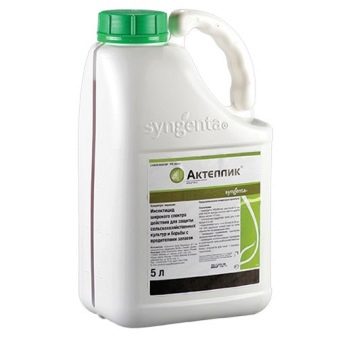
You can find out how to transplant nolin after purchase by watching the video below.








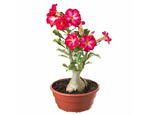




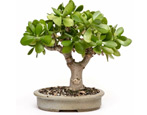




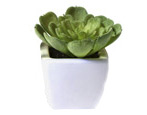








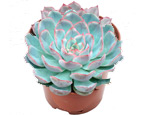



















The comment was sent successfully.